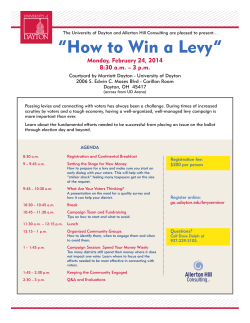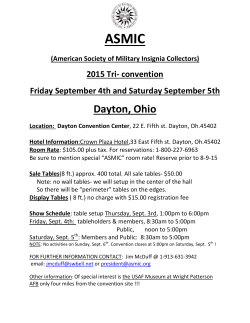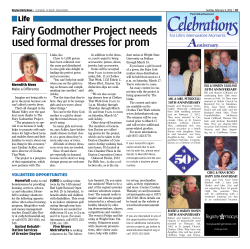
Department of Electrical Engineering Dr. Elena Guliants
Department of Electrical Engineering Dr. Elena Guliants Department of Electrical and Computer Engineering University of Dayton University of Dayton Research Institute Friday, February 27, 2015 3:00PM 230A Davis Hall “1-D and 2-D Inorganic Structures in Nano-Bio Interfaces and Interactions” Abstract: Recent advances in the science of nanostructured materials have resulted in a wealth of their applications to biological and medical research. Combination of nano-entities displaying novel, unique, and potentially valuable properties with biological molecules open numerous new opportunities in biomaterials research. Controlled drug delivery and release from nanostructured functional materials is attracting ever increasing attention due to opportunities in treatment of a variety of disorders and illnesses, including cancer. At the same time, many nano-assembled structures demonstrate capability to address the problems associated with microbial growth. Nanochemistry and Nanoengineering Group at the University of Dayton Research Institute is leading several projects in the area of nano-biocomposites and nano-bio interactions. Iron oxide core-sell nanoparticles have been explored in terms of magnetic phases’ formation in the presence of a series of proteins and DNAs as coating agents for attaching anti-cancer drugs and as the hyperthermia agents. Interestingly, the nature of the biological “shell” and its concentration were shown to drastically affect the stoichiometry and morphology of the inorganic product in situ during the synthesis. Another discussion will be offered on graphene oxide-based nanofilters and their interaction with bacteria in the hydrocarbon fuels. The study attempted to address multiple conflicting reports about the biocompatibility and antimicrobial activity of graphene oxide. Bacterial proliferation was evaluated as in the presence of pure colloidal graphene oxide as by using silver-decorated graphene oxide filters. The measurements included tracking green fluorescent protein (GFP) in columns and filtrates, SEM, bacterial attachment strength test, and antimicrobial activity of both GO and Ag-GO. Mechanisms of bacteria filtration will be discussed. Biography: Dr. Elena Guliants has almost 25 years of research experience in electronic materials and devices and 17 years in the emerging area of nanoscience and nanotechnology. She has authored over 120 technical publications and presentations and developed new graduate courses on Nanoelectronics and New Generation Advanced Photovoltaics for the University of Dayton (UD) Electrical and Computer Engineering Department, where she has a joint appointment as an Associate Professor. She also teaches several electronics classes at the undergraduate level, actively participates in UD-offered outreach programs for high school students and supervises M.S. and Ph.D. students from the UD School of Engineering and other universities.
© Copyright 2025





















